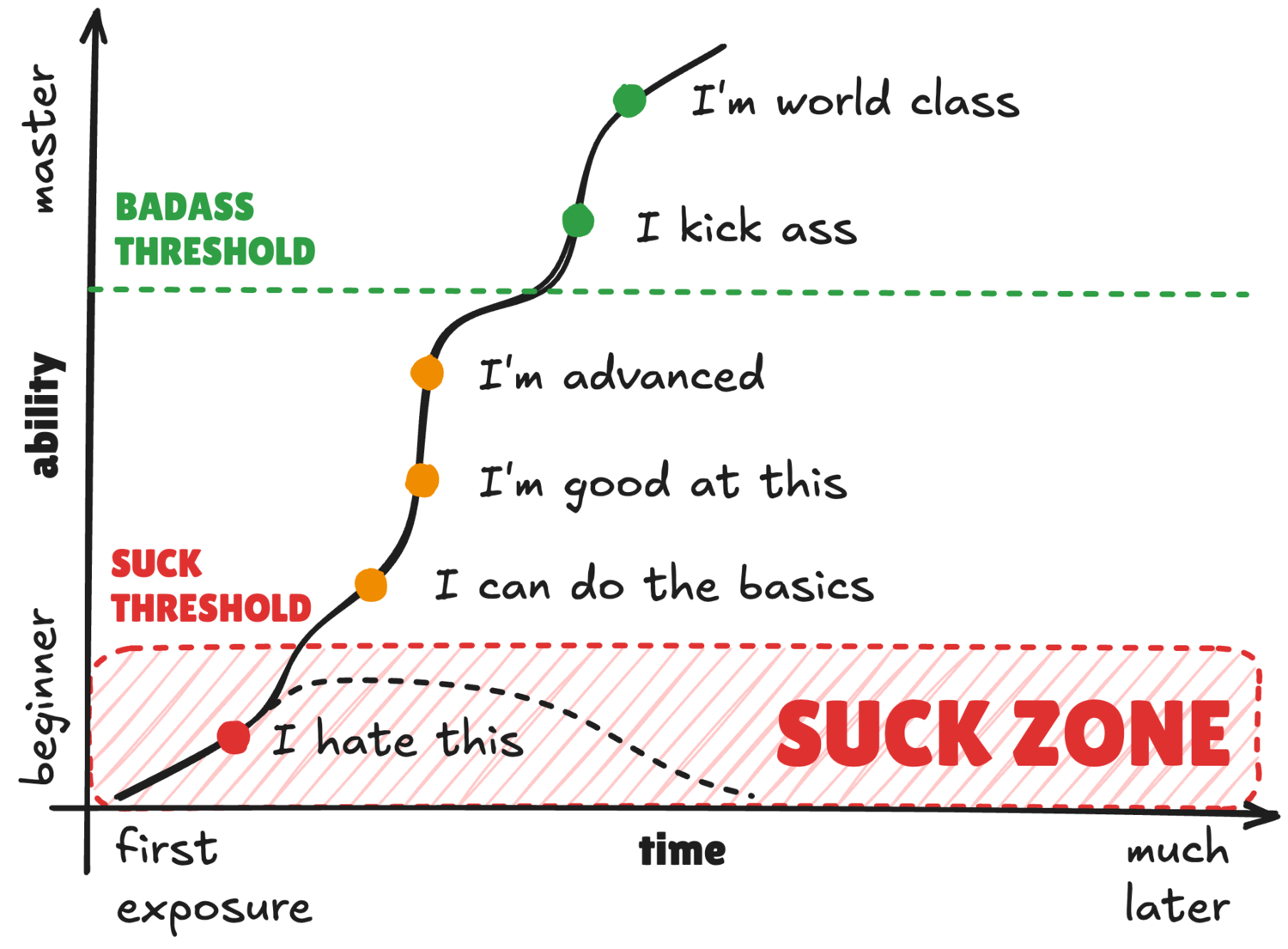Suck Zone
The Suck Zone is the period between the first exposure to a product and the point where a new user feels confident enough to perform basic tasks. It is useful for analysing retention and churn and designing strategies to help users become more competent and interested in continued use.

(open the image in a new tab)
The concept of the Suck Zone was defined by Kathy Sierra in the book Badass: Making Users Awesome, where she suggests that helping users quickly cross that zone is the key to retention.
The most vulnerable time for new users is in The Suck Zone. If we lose them here, we won’t get them back.
– Kathy Sierra, Badass
According to Sierra, the initial threshold for a user doing something meaningful is as little as 30 minutes. Rather than gamification (rewards, status, badges…) that provide extrinsic motivation, Sierra suggests that intrinsically rewarding experiences (a user succeeding in a meaningful task) provide a much better pay-off for users, and motivate them to continue. The initial experience does not necessarily need to help users fully complete the key tasks, but instead to users “a hint of their future power”.
Some common ways to help users cross the suck threshold are:
- Reducing cognitively expensive choices in the user interface (for a more systematic approach applied to initial interactions, Straight-line onboarding from Product Led Growth can help here).
- Quick start guides that are not intimidating
- “Wild Experimentation Mode”, helping users create something with a single click, along with “information and tools to recover from their experiments” and “reassurance that they won’t break or lose anything”
- Providing a Performance Path Map, with clear steps for progression, and a way for users to assess where they are relative to the full map.
Sierra suggests that before acquisition, most marketing materials focus on the bigger motivational context, but after acquisition most marketing materials focus on the product or tool. As a result, users “lose the connection between the compelling context and the tool”, and lose trust in the product. Instead of creating “seductive marketing campaigns” or incentives to keep using a product (such as discounts), Sierra suggest anticipating the problems people might experience that cause them to struggle, and compensating by removing blockers or providing a sense of progress. Note that in this case struggle is not related to a specific tool, but about the user’s ability to perform tasks in the wider compelling context.
Learn more about the Suck Zone
- Badass: Making Users Awesome, ISBN 978-1491919019, by Kathy Sierra (2015)